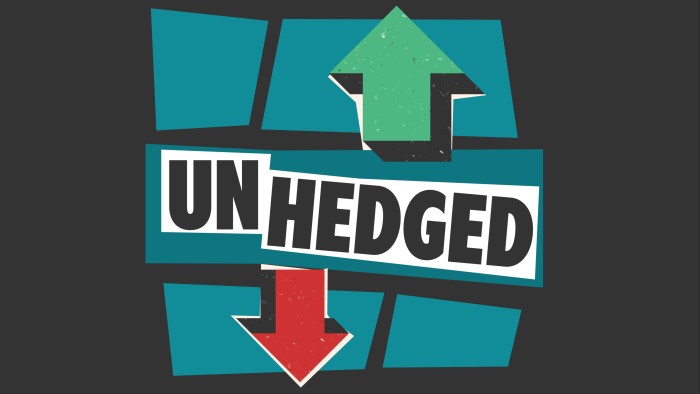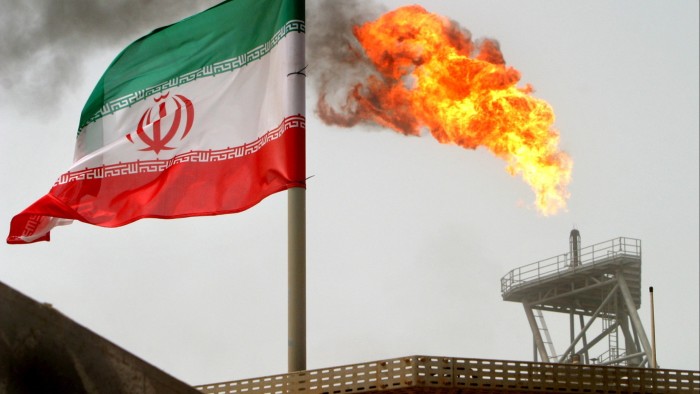This article is an on-site version of our Unhedged newsletter. Premium subscribers can sign up here to get the newsletter delivered every weekday. Standard subscribers can upgrade to Premium here, or explore all FT newsletters
Good morning. The University of Michigan consumer sentiment index, released Friday, improved much more than expected, ending a 5-month downward trend. There was improvement across wealth levels, political affiliations, age, and sub-indices ranging from perceptions of the economy to expectations for the future. It seems that consumers are growing less worried about tariffs and mass deportations. Or thinking they won’t actually happen. Trump does follow a certain pattern on these things, after all. Email us: unhedged@ft.com.
Oil
Israel’s attack on Iranian nuclear facilities has escalated to back-and-forth missile volleys that continue as we write. Much is at stake. Markets, as always, are focusing on what they can most easily quantify — the oil price. The consensus, which seems sensible to us, is that while prices might go higher from here, the chance of a big spiralling increase is quite low. “What I’m seeing in my channels is not that the highest price is in yet, but that most people are selling the big highs, the Straight-of-Hormuz-closure kind of risks,” says Rory Johnston, founder of Commodity Context.
The reasons to believe that the conflict will remain contained are well rehearsed: Iran is in a weak position, Israel has tacit US support, and so on. The recent history of the oil price provides some useful context here. With the exception of Russia’s invasion of Ukraine, the big sustained swings in the oil price since the turn of the millennium have been driven by broader geoeconomic trends, not geopolitical ones:
Why is this conflict not like the Ukraine war? Because Russia is a much bigger producer of both oil and gas than Iran, and because Europe’s concentrated dependence on Russian supply required a major rearrangement of supply chains. Also, the world economy was picking up steam at the time, resulting in higher oil demand; the global economy is currently projected to slow down.
That said, geopolitical events often cause short-term dislocations in the oil price — though sometimes the direction of change can be counterintuitive. As Hunter Kornfeind at Rapidan Energy pointed out to us, the US invasion of Iraq momentarily brought down the oil price in March 2003, rather than pushing it up, though it rose again after:

But generally, unstable events in the Middle East, particularly those that directly affect oil production or exports, add to the oil price. One of the biggest intraday movements in recent history came in 2019 when Iranian drone attacks hit oilfields and vast oil processing facilities in Saudi Arabia, taking them offline for several days and putting a dent in global supply:

In 2023, when Hamas attacked southern Israel, the price popped, as people feared full-fledged regional escalation. But none materialised:

Since then, the market has learned to shrug off rising tensions in the region. When Iran and Israel came to blows in April 2024 and October 2024, day to day moves were mostly restrained.
But this week’s events are clearly different in kind, and while the price increases do seem likely to be contained, low-probability, high-impact outcomes — tail risks — must not be ignored. Johnston highlights one possibility: that Israel, provoked by attacks on its cities, strikes Iran’s main oil export facilities on Kharg Island (so far, Israel’s strikes have only targeted Iran’s domestic oil economy). Once its ability to export is compromised, Iran has less to lose by mining the Straight of Hormuz — and might start hitting other countries’ regional oil facilities, in a repeat of the 2019 strikes. A wider war could ensue. “Once the situation spirals, all the tail risks come into play at once,” he says. “They are not independent risks. So even a 1-2 per cent increase in the probability of these things could move the oil price dramatically.”
(Reiter and Armstrong)
European bond yield convergence
“Italy, Greece and Spain emerge as winners in bond market anxiety,” may be the FT headline that, read from the perspective of a decade or so ago, would seem the most unlikely (edging out even last year’s “Donald Trump elected US president in historic comeback”). Back then, the five “Piigs” — Portugal, Ireland, Italy, Greece and Spain — bore the brunt of the Eurozone debt crisis. But the four “Pigs” (Ireland hit escape velocity a while ago) are now expected to grow faster than their richer northern neighbours, and their governments have been better stewards of public finances of late.
Accordingly, spreads between southern European and German yields (the gold standard in Europe) have tightened considerably:

This has the makings of an investment case. If de-dollarisation and the pivot away from US Treasuries is real, investors may chase yields all the way to peripheral Europe. In fact, the simultaneous falls in southern European yields and rise in US Treasury yields may be evidence of the trade away from America.
But let’s not get too excited. This is a two-sided story. Though Pigs yields have fallen considerably, German Bund yields have been on a rising trend, contributing to the change. Bund markets are responding to the removal of Germany’s debt ceiling and promises of fiscal stimulus by new chancellor Friedrich Merz. But the excitement has cooled a bit recently:

Remember that Merz’s coalition is wafer thin. “The sentiment towards that [German debt] idea has outstripped political realities,” says Daleep Singh, chief global economist at PGIM.
And as Davide Oneglia at TS Lombard explained to us, Germany’s tight fiscal rules and the hunt for safe assets after the Eurozone crisis resulted in German bonds getting a “convenience yield”. Their stability made them appealing as collateral which, helped by their relative scarcity, held down yields. You can see the convenience yield in two spreads: that between 10-year German Bunds and on equivalent debt issued by Germany’s public investment bank, whose bonds are also guaranteed by the government; and that between Bunds and the 10-year overnight index swap rate, considered to be the risk-free rate in Europe. The rise in these spreads shows that the convenience yield is evaporating as Bunds become less scarce. The graph below is Oneglia’s (he calls out the start of the ECB’s quantitative easing in 2015 and the start of its asset purchase programme in 2020, which put more downward pressure on Bund yields):

The convergence between Bunds and Pigs bond yields, in other words, may say more about the end of the Bund convenience yield than the improved outlook on the periphery.
Finally, Portuguese, Italian, Greek, Spanish bonds — while more appealing than they had been — are still not that appealing relative to Treasuries. The countries all have high debt to GDP ratios, and could come under real strain if there is a global slowdown, from tariffs or whatever else, while the US benefits from a (smaller but still palpable) fight to safety. According to Gordon Shannon at TwentyFour Asset Management, there is not a huge popular push in the Pigs countries to “make fiscal positions look in any way more sustainable in the long term . . . the politicians may lack the will.”
(Reiter)
One Good Read
The king of all summer movies.
FT Unhedged podcast

Can’t get enough of Unhedged? Listen to our new podcast, for a 15-minute dive into the latest markets news and financial headlines, twice a week. Catch up on past editions of the newsletter here.
Recommended newsletters for you
Due Diligence — Top stories from the world of corporate finance. Sign up here
The Lex Newsletter — Lex, our investment column, breaks down the week’s key themes, with analysis by award-winning writers. Sign up here


